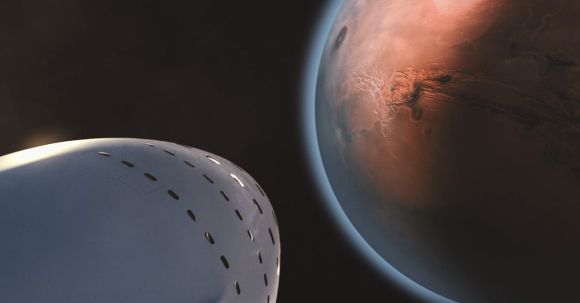The idea of colonizing Mars has fascinated scientists and space enthusiasts for decades. With its similarities to Earth and the potential for sustaining human life, Mars is often seen as the next frontier for human exploration and settlement. However, the challenges and risks involved in colonizing the red planet are immense. In this article, we will explore the feasibility of colonizing Mars and the obstacles that need to be overcome.
The Red Planet’s Potential
Mars has several key factors that make it a potential candidate for colonization. One of the most important is its proximity to Earth. On average, Mars is about 225 million kilometers away from our planet, making it one of the closest planets to us. This proximity allows for easier travel and communication compared to other celestial bodies.
Another factor is Mars’ similarity to Earth. Both planets have a similar length of day and night, which means humans could adapt to the Martian day-night cycle without significant disruption to their circadian rhythm. Mars also has a thin atmosphere, which provides some protection against harmful cosmic radiation.
Water, a crucial resource for sustaining life, has been discovered on Mars. Evidence suggests the presence of underground ice deposits and the possibility of liquid water beneath the planet’s surface. This water could potentially be extracted and used for drinking, growing crops, and generating power.
Challenges on the Red Planet
Despite its potential, colonizing Mars is not without its challenges. The first and most obvious hurdle is the distance. Traveling to Mars takes months, and the journey poses significant risks to the physical and mental health of astronauts. Extended periods of microgravity can lead to muscle and bone loss, while isolation and confinement can have a negative impact on mental well-being.
Mars’ thin atmosphere is another obstacle. The lack of a substantial atmosphere means that the planet is subjected to harsh radiation from the sun and cosmic rays. Protecting astronauts from this radiation is essential but presents significant engineering challenges.
The harsh Martian environment also presents challenges for sustaining life. Mars’ average temperature is around -80 degrees Fahrenheit (-62 degrees Celsius), which is far colder than any place on Earth. The planet’s thin atmosphere also means that the air pressure is less than 1% of Earth’s, making it inhospitable to human life. Creating habitable environments on Mars would require extensive modifications to the planet’s surface and atmosphere.
Overcoming the Obstacles
Despite the challenges, scientists and engineers are actively working on solutions to make Mars colonization a reality. One proposed solution is the establishment of a permanent base on Mars’ surface. This base would serve as a starting point for further exploration and settlement. It would provide a controlled environment for astronauts to live and conduct research, shielding them from the harsh Martian conditions.
Technological advancements are also crucial for the success of Mars colonization. Scientists are developing new propulsion systems, such as ion drives, that could significantly reduce travel times to Mars. Innovative radiation shielding materials and habitat designs are being explored to protect astronauts from the harsh radiation environment.
Additionally, the use of robotics and automation could play a vital role in colonizing Mars. Robots could be sent ahead of human missions to prepare the landing site, extract resources, and construct habitats. This would minimize the risks to human astronauts and allow for the efficient utilization of resources.
Conclusion: The Future of Mars Colonization
While colonizing Mars is a monumental task, it is not impossible. The potential of the red planet, combined with advances in technology and human ingenuity, make it a realistic goal for the future. Overcoming the challenges of distance, radiation, and harsh environmental conditions will require significant research, innovation, and collaboration.
In the coming decades, we will likely witness the first manned missions to Mars, setting the stage for the eventual colonization of the planet. The lessons learned from these missions will be crucial in developing the technologies and strategies needed for long-term human presence on Mars.
Colonizing Mars is not only a scientific endeavor but also a testament to human curiosity and exploration. It represents a new chapter in our history as a spacefaring species and opens the door to a future where humanity expands beyond the confines of Earth.
